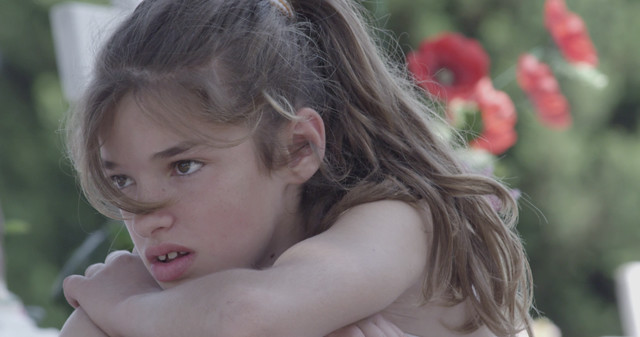Adrian Paci exhibition at Kalfayan Galleries
Focal point of the large-scale installation titled ‘Names’ is the fact that a large number of immigrants in Greece have changed their original names and substituted them with Greek ones. The work expresses a neutral stand towards the socio-ethical issues of such a phenomenon. As the artist states, his main goal is to ‘transform the gallery into a kind of "agency" that invites people who changed their names to write their original name on a piece of paper. In this way, the immigrants who considered their original name "problematic" for their integration into Greek society are invited to affirm it through a simple gesture of hand writing on a small piece of paper.’
The ‘collection’ of the Albanian names coordinated by the gallery lasted almost a year. Paci brings the visitor in confrontation with the results of this process in the form of marble sculptural pieces which resemble gravestones and bear inscriptions of the ‘collected’ names. At the same time he invited the gallery staff and friends to pronounce in front of the camera the names of the immigrants, underlining in this way the gesture of the involvement of the gallery in the project and attributing a highly personal character to the work.

Adrian Paci, The Guardians, 2014, video still, Courtesy of the artist, Kalfayan Galleries (Athens -Thessaloniki) & Galerie Peter Kilchmann (Zurich)
‘Names’ addresses core issues of Paci’s work such as migration, displacement and disconnection, cultural and ethnical identity, while it aspires to act as a highly personal gesture that creates a space of reflection through personal and emotional involvement of real people. The show is conceived as a physical and mental process from the ‘Names’ installation to the film ‘The Guardians” which marks also the end of the architectural space and the exhibition itself.
Paci’s film titled ‘The Guardians’ is a poetic reflection of the relationship between childhood and death. The story takes place in the Catholic cemetery of the artist’s hometown, Shkodra. During Paci’s childhood this old cemetery was not in use any more, but remained the only place in town where religious symbols could still be found, that is after the decision of the then Communist regime to ban all religious symbols as part of the campaign against religion which had peaked in the 1960s. The film draws inspiration from Paci’s childhood memories and the cemetery’s highly paradox character at that time, metaphysical and at the same time intriguingly secular since it had become a popular secret dating place. At the same time the film is triggered by a real event: In 1990 a group of young people decided to enter the cemetery and start clearing it from the dirt and the grass that was growing around the tombs. At the same time with this ‘new life’ of the cemetery, another new phenomenon appeared, that of the “abusive” buildings as the artist describes it. Those who did not own space in the official cemetery started building their own or their families’ tombs in this old Catholic cemetery, creating a kind of chaotic architecture, very typical in general in post-communist Albania. Among the new characters that started populating the cemetery, were groups of children who hung out there and were paid by the owners or relatives to clean and take care of the tombs. “The image of the kids washing the tombs has been working inside myself for quite some time” says Adrian Paci “and I decided to use it in this video”.
The film is characterized by Paci’s lyrical rhythm and poetic sequence maintaining a delicate balance between what is revealed and what it is being insinuated, formally and ideologically. It begins with abstract soundless scenes until some movements reveal a human presence. This is followed by a random series of portraits and close-ups of hands playing with the sand. The rhythm picks up and more clear images appear, those of children’s hands moving and cleaning. As the camera moves from the close up details and starts pulling up it becomes apparent that there are not just three or four kids present but the cemetery is crowded with children going around the tombs and cleaning them.
The exhibition runs from 5th February 2015 till 28th March 2015. Opening hours: Monday 11.00 - 15.00 | Tuesday - Friday 11.00 - 19.00 | Saturday 11.00 – 15.00
About the artist
Adrian Paci was born in Shkodra, Albania, in 1969. He studied at the Art Academy of Tirana from 1987 to 1991. Paci lives and works in Milan.
Paci’s works cover the fields of video, photography, painting, drawing, sculpture and installation. They are formed by an emotional sympathy for the individual. He transfers existential moments of life into stunning and timeless images. Paci sees the vulnerability and fragility of humans as their basic condition, which confers beauty and dignity at the same time. Paci is mainly known as a video artist but he actually sees himself as a painter. He elides the boundaries between visual media through medially transferring images from films or videos into paintings. Through the years Paci started to interact with the work of Pier Paolo Pasolini and consistently comes back to it. As for Pasolini working with close-ups remains significant for Paci’s work, which touches us through its humanity.
Adrian Paci’s works have been presented in numerous exhibitions internationally, such as in solo shows at Musée d’Art Contemporain, Montréal (2014), Galeries Nationales du Jeu de Paume, Paris, France (2013), Kunsthaus Zurich (2010) and CCA, Tel Aviv (2008).
Top image: Adrian Paci, The Guardians, 2014, video still, Courtesy of the artist, Kalfayan Galleries (Athens -Thessaloniki) & Galerie Peter Kilchmann (Zurich)
Document: from the official press release
.png)



